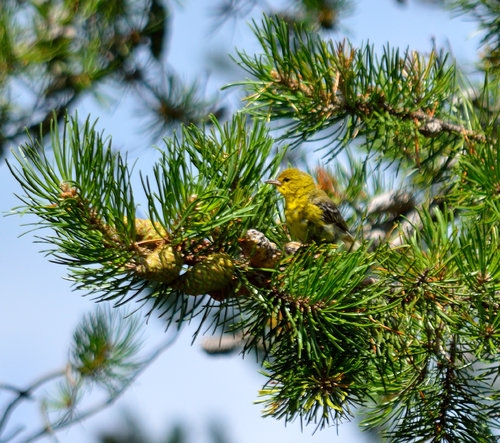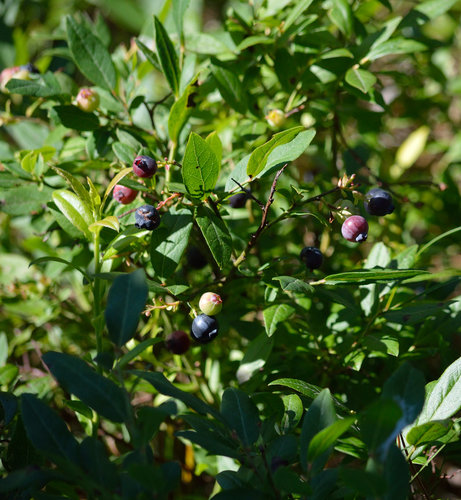Navigation
Install the app
How to install the app on iOS
Follow along with the video below to see how to install our site as a web app on your home screen.
Note: This feature may not be available in some browsers.
More options
You are using an out of date browser. It may not display this or other websites correctly.
You should upgrade or use an alternative browser.
You should upgrade or use an alternative browser.
Camera action while being outdoors enjoying the fresh air and adventure. Feel free to add yours too.
- Thread starter huronmtns
- Start date
Hunting Wife
Well-known member
Serious (maybe dumb) question for @huronmtns or anyone from East-ish...why is the river water always brown? Being from out west, I’m used to crystal clear water, or super turbid water. But I’ve never seen water like I see in your photos, and many others from back East. It looks tannic, but I honestly have no clue why it’s that color. I have always wondered about it.
huronmtns
Well-known member
Serious (maybe dumb) question for @huronmtns or anyone from East-ish...why is the river water always brown? Being from out west, I’m used to crystal clear water, or super turbid water. But I’ve never seen water like I see in your photos, and many others from back East. It looks tannic, but I honestly have no clue why it’s that color. I have always wondered about it.
The leaves from the dense stands of deciduous trees and conifers create so much tannic acid and the soil does not have enough filtration to neutralize the tannin levels. You are spot on with the tannic staining of the water. I use tag alder bark shavings for creating black dye for dying traps by adding it to the water and boiling the mixture to condense the color. Late in the fall when the leaves have been on the ground for two or three weeks I have seen puddles in the woods that are almost ink black with a blue sheen in color. I guess we could compare it to making tea with tea leaves.
Tannins
Last edited:
Hunting Wife
Well-known member
The leaves from the dense stands of deciduous trees and conifers create so much tannic acid and the soil does not have enough filtration to neutralize the tannin levels. You are spot on with the tannic staining of the water. I use tag alder bark shavings for creating black dye for dying traps by adding it to the water and boiling the mixture to condense the color. Late in the fall when the leaves have been on the ground for two or three weeks I have seen puddles in the woods that are almost ink black with a blue sheen in color. I guess we could compare it to making tea with tea leaves.
Tannins
www.fs.fed.us
Interesting. I’ve never spent time anywhere dominated by deciduous trees. Figured it was something like that. Learn something every day. Thanks
huronmtns
Well-known member
huronmtns
Well-known member
I found a humming bird resting in a stack of needles today too! If you think these birds look small when they are flying, you should see how small they are when they are sitting! Kind of like watching a big Mule Deer bed down in tall sage brush. If you didn't see it happen you never would know it was there. Similar event getting the photo shot of this bird. Today's trophy for my camera hunting.


Last edited:
This morning presented me with a first sighting ever in my life. They are small and very slippery birds to try capture in a picture. Low to the ground, in thick brush, and frequent movers chasing food.
Winter Wren
@huronmtns Congratulations on another lifer. Do you keep track of how many species you’ve seen?
I recall a triple lifer day with a birder friend in Nairobi National Park. He was so pumped.
huronmtns
Well-known member
I just counted my check list in the back of my guide book. The count was 237 different species. Back when I was going to NMU I took a class during spring break. The class was called Ecology of Coastal Texas. The group of us began bird ID as soon as we started the trip traveling from the UP to the southern tip of Texas along the Rio Grande and back to the UP. That trip as a group we set a class record of 171 species. Many of those I had seen before except for the southern birds like the Green Jay or the Crested Caracara. One of the Crested Caracaras was one that I actually had a thread on this forum about . Very unique for that species. A picture of one in the UP in the winter and then finding the carcass in the spring. I'll try and find the thread and link it to this response for those that may have not been members yet. I think it was titled "Somebody get this bird a compass".
I found the thread.
 www.hunttalk.com
www.hunttalk.com
It turned out that the tissue was to far deteriorated for the taxidermist to do the job.
This was the taxidermist that the MDNR tried to have salvage and mount this bird. I believe she only does birds and does them for a number of state agencies.

 www.facebook.com
www.facebook.com
I found the thread.
Somebody give this bird a compass
I drove up to camp today to check things out since I haven't been up there in two weeks. I put a trail camera out watching over our deer carcass in hopes of catching some predators on film. I was extremely surprised to see this on the camera pictures. Keep in mind the location of this camera is...
It turned out that the tissue was to far deteriorated for the taxidermist to do the job.
This was the taxidermist that the MDNR tried to have salvage and mount this bird. I believe she only does birds and does them for a number of state agencies.

Nicole's Naturals - Bird Taxidermy | Onaway MI
Nicole's Naturals - Bird Taxidermy, Onaway, Michigan. 1,491 likes · 37 talking about this · 516 were here. Award winning bird taxidermy by licensed taxidermist, Nicole Griewahn
 www.facebook.com
www.facebook.com
Last edited:
JFish
Well-known member
huronmtns
Well-known member
A couple of quality photos.View attachment 148342
View attachment 148343
Continuing the bird photo trend. No clue what they are.
I can only help identify the bird in picture #2. It is a Steller's Jay. I'm guessing it was taken somewhere in the rocky mountains.
The bird in picture #1, I hope someone else can help us out. A bit more information on the location of where that bird was photographed may help us figure out what it is. I really like the composition in this image too. Running water, a tree branch, a rock with good color, and a clear picture of a small bird blending everything together. Not an easy scene to capture. I wish I could positively identify the bird.
JFish
Well-known member
A couple of quality photos.
I can only help identify the bird in picture #2. It is a Steller's Jay. I'm guessing it was taken somewhere in the rocky mountains.
The bird in picture #1, I hope someone else can help us out. A bit more information on the location of where that bird was photographed may help us figure out what it is. I really like the composition in this image too. Running water, a tree branch, a rock with good color, and a clear picture of a small bird blending everything together. Not an easy scene to capture. I wish I could positively identify the bird.
Correct they were both captured in Rocky Mountain National Park. Believe it or not my wife took the first picture while I was fishing. I was a bit jealous because I just handed her the camera and she doesn’t know how to use the adjustments and but got a really great picture. One of the best pictures from our trip actually.
huronmtns
Well-known member
Picture #1. The bird has a warbler, vireo, flycatcher type of beak. Insect eater not a seed eater. I'm guessing it has juvenile plumage. I just can't nail this species down with the searching I have done so far. I hope someone else can help us with this bird ID. It's kind of a challenge for me now.Correct they were both captured in Rocky Mountain National Park. Believe it or not my wife took the first picture while I was fishing. I was a bit jealous because I just handed her the camera and she doesn’t know how to use the adjustments and but got a really great picture. One of the best pictures from our trip actually.
Last edited:
huronmtns
Well-known member
huronmtns
Well-known member
huronmtns
Well-known member
huronmtns
Well-known member
huronmtns
Well-known member
Last evening on the way home from camp I ran into the albino deer for the third time since spring.
The true definition of a white-tail.

A pretty good mouth full!

I was hoping these were seeds stuck to the side of the deer's head. But I'm pretty sure that these are mosquitos drawing blood. This now gives me an idea what these animals may be going through while the mosquitos are in season and that we wouldn't typically see on a normal or melanistic colored deer.

The true definition of a white-tail.

A pretty good mouth full!

I was hoping these were seeds stuck to the side of the deer's head. But I'm pretty sure that these are mosquitos drawing blood. This now gives me an idea what these animals may be going through while the mosquitos are in season and that we wouldn't typically see on a normal or melanistic colored deer.

huronmtns
Well-known member
There are clear water streams that feed the tannic stained rivers. I went out and took a couple of pictures just as an example. These clear water streams are a result of aquifer drainage out of large deep deposits of sand based soil. The sand must have enough absorption capability to filter the tannins out of the water from spring snow melt and rain fall.


I can think of other streams that is a better example but don't have rocks in them to make a dynamic water flow picture. That might be my next adventure. To a creek that drains a sandy soil blueberry plain. Hopefully offers some character for a picture and some blueberries for picking.


I can think of other streams that is a better example but don't have rocks in them to make a dynamic water flow picture. That might be my next adventure. To a creek that drains a sandy soil blueberry plain. Hopefully offers some character for a picture and some blueberries for picking.
JFish
Well-known member
Similar threads
- Replies
- 51
- Views
- 4K
- Replies
- 171
- Views
- 11K
Latest posts
-
-
Help Me Legalize Semiauto Rifle Big Game Hunting In Pennsylvania
- Latest: Schutzhund




















